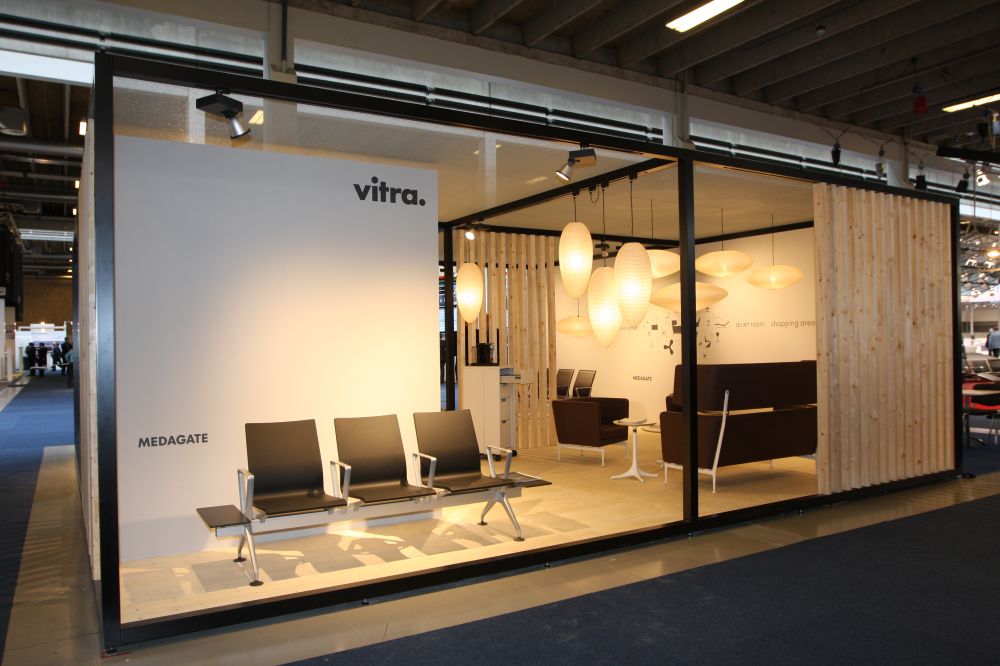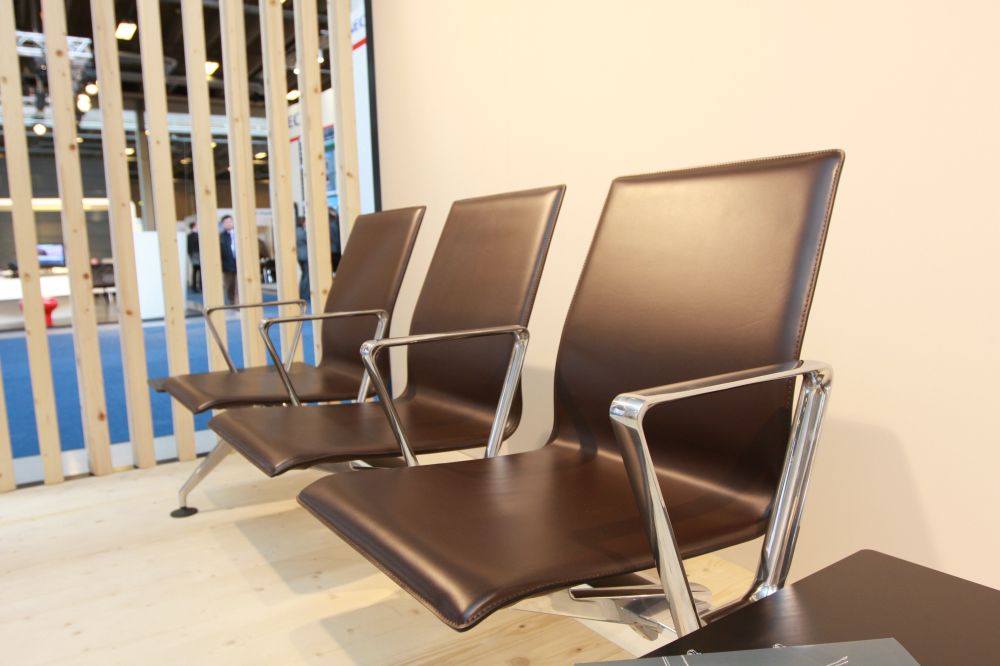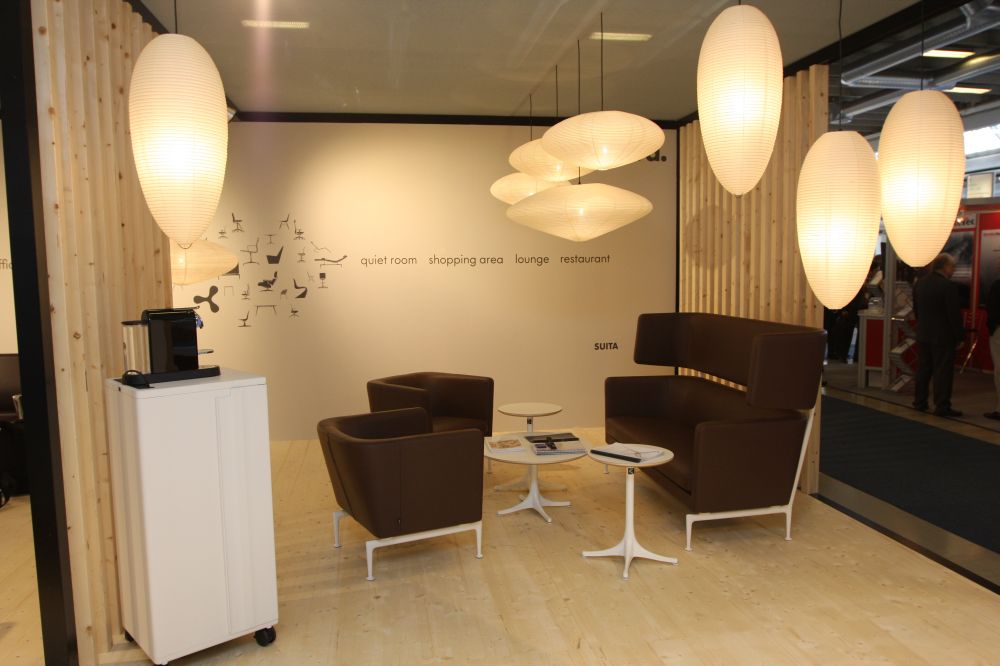We suspect the reason we write so much about designer furniture in an airport context is simply because of the amount of time we spend in airports.
And consequently the amount of time we spend thinking about and analysing what we are being offered.
If you're going to be delayed at Frankfurt for five hours. You want to make sure that your seat is comfy.
If you're going to have to spend the night at Copenhagen Airport. You want to make sure your seat is comfy.
If you're... you get the idea.
However it's not just us who are spending ever more time at airports. The past decade has seen a dramatic rise in airline passenger numbers: and ever greater passenger numbers obviously means an ever greater demand for airports and airport infrastructure.
And as with all such architectural projects, the owners and operators want an interior that is as familiar as it is unique.
The biggest and most important trade fair for airport operators is Passenger Terminal Expo, and in addition to companies offering baggage handling and signage solutions, designer furniture producers such as Vitra or USM Haller are also a regular feature of the show.
Passenger Terminal Expo 2012 is being hosted by Vienna Airport, and ahead of the show we spoke to Pascal Berberat, Head of Vitra's Airport Division, about airport furnishings, their collaboration with Alberto Meda and, most important for us, why seats in airports always have armrests? But started by asking why a globally active company such as Vitra needed a specialised airport division?
Pascal Berberat: The airport business is globally very uniform. Where, for example, the choice of home furnishings is often affected by cultural aspects; airports are very similar and have similar requirements regardless of where they are. And so where Vitra has an international network of agents and specialist dealers for home and office furniture, it makes more sense to have a central airport department. Plus an airport isn't just departure lounges it is more like a small city, with shops, medical facilities, restaurants etc... so a wide range of zones where furniture is required. And so in that respect Vitra can offer a wide range of solutions and experience in all types of furnishings.
(smow)blog: Staying with departure lounges. What for you are the most important criteria for airport seating?
Pascal Berberat: For me it is about combining the, sometimes conflicting, requirements of the passengers need and right for well being with the airport or the operators need for efficiency.
(smow)blog: In that context. In addition to specifically created products such as the Airline Series from Sir Norman Foster, you also offer various Vitra classics from, for example, Maarten Van Severen as airport seating. Is that necessary? Why not just stick with one, specially created, product?
Pascal Berberat: Nowadays everybody is talking about ecology and sustainability. A topic which has been anchored in Vitra's processes for decades. However, being actively engaged in sustainability doesn't just mean using renewable resources, optimizing waste management, designing products with a long life cycle, etc. It is also about offering our clients products with a visual sustainability. We're all guilty of having once thrown out an object that was still working or had been in good shape. We dumped it because it was out of fashion. Through working with a variety of designers, in particular with the "old masters" like George Nelson, Jean Prouvé or Charles and Ray Eames we learn what is important to successfully develop products which are not only long lasting but also have a visual sustainability. Considering that 90% of CO2 emissions are generated during the manufacturing process of a product, what is more ecological: using a product for decades or replacing it every 5 years because it's aesthetics seem to be outdated? Vitra's history with the old masters combined with the freshness of contemporary designers and engineers allow us to develop products with the potential to become classics of the future.
(smow)blog: Which leads nicely on to the next question. You recently worked with Alberto Meda on the Meda Gate series? Why Alberto Meda, who is after all best known for his office furniture ?
Pascal Berberat: Alberto Meda has worked on numerous projects with Vitra, and has created successful concepts for us in the past. Alberto Meda is a designer and engineer: which makes him perfect for the specific and particular demands of an airport seat. Thanks to Alberto Meda's engineering excellence we now have in Meda Gate a product which not only responds to the extraordinary heavy use situation in airports; but also offers superior comfort in an very elegant aesthetic. Plus one has to add that in addition to his technical competence he is a very charismatic person and it is a real joy to work with him!
(smow)blog: To end. You've already said what you find important in airport chairs. Now its our turn. One thing that annoys us is armrests on chairs in airports. Why don't you want to let us sleep?
Pascal Berberat: When people lie on benches at airports, one person takes up a whole bench. And then the airport's capacity calculations don't work. I have three seats, but only one user. And so instead we offer recliner elements within the Airline and Meda series for use in areas where airports expect higher numbers of transit passengers....


